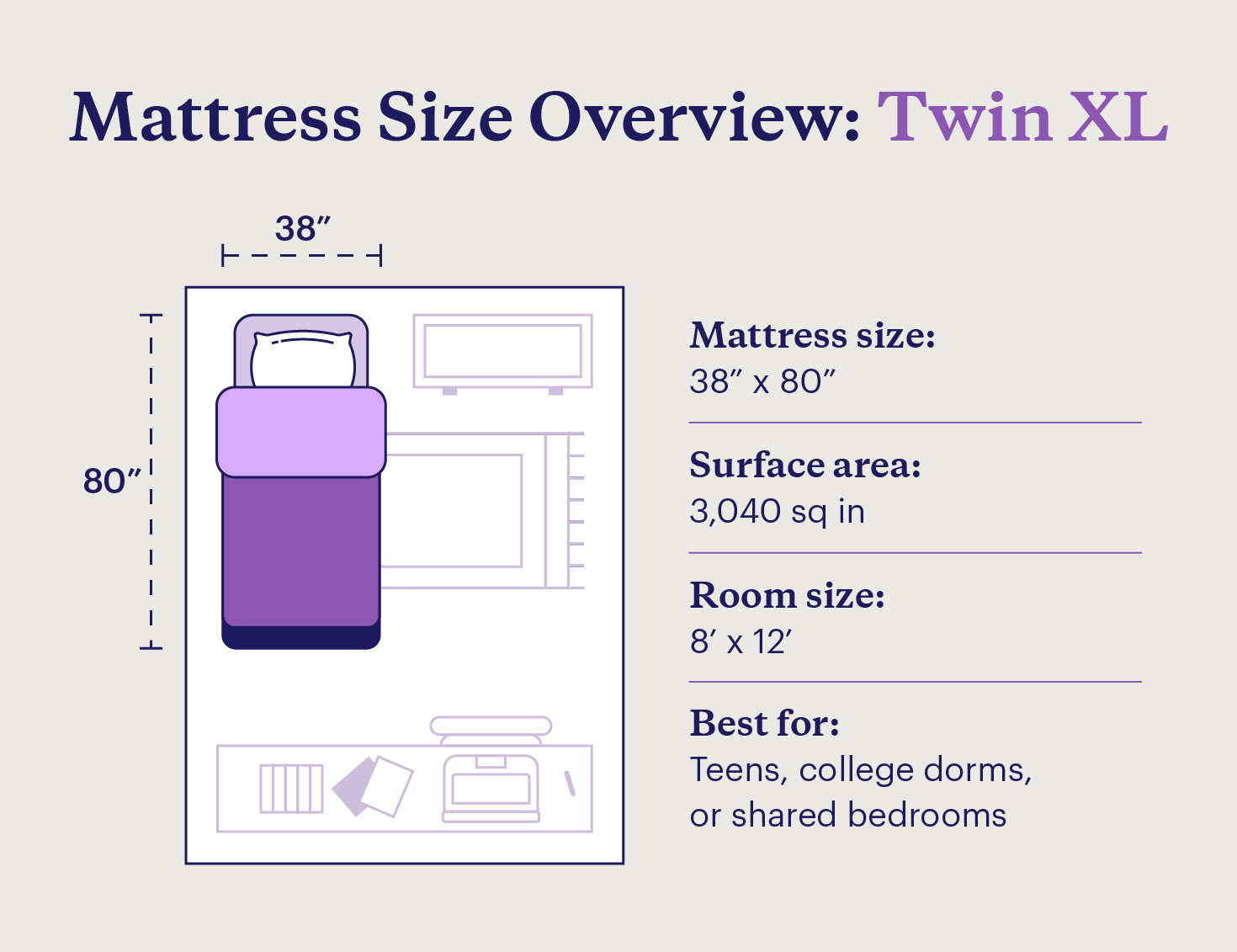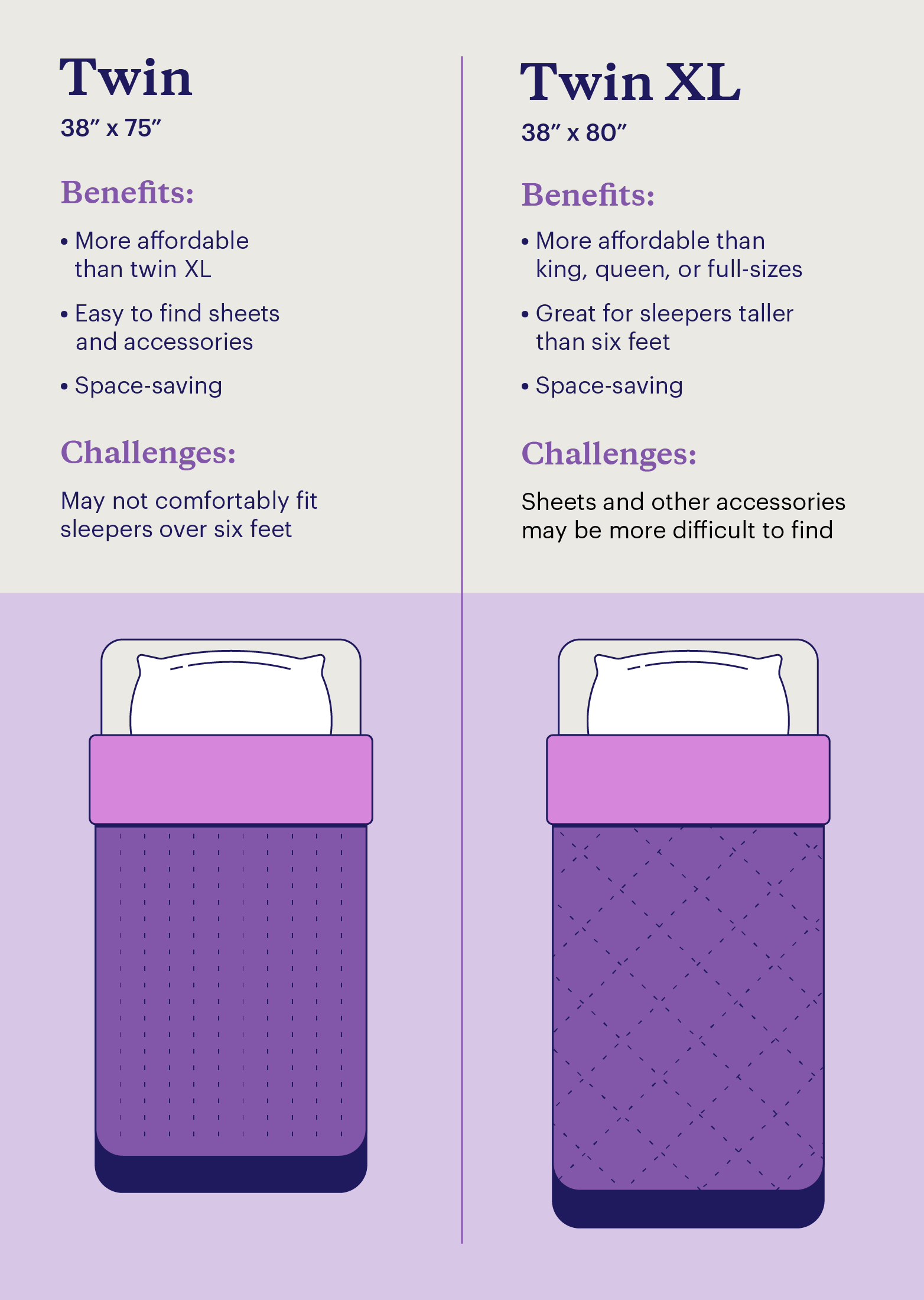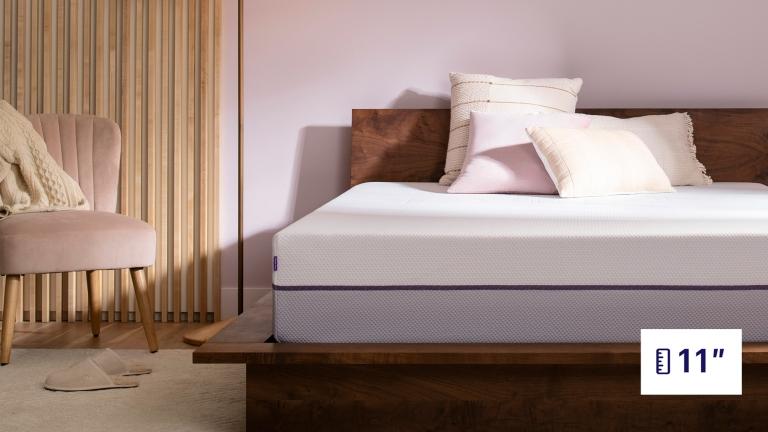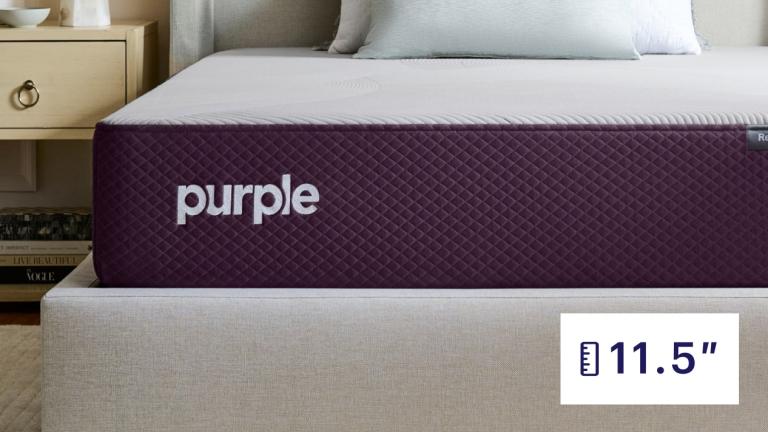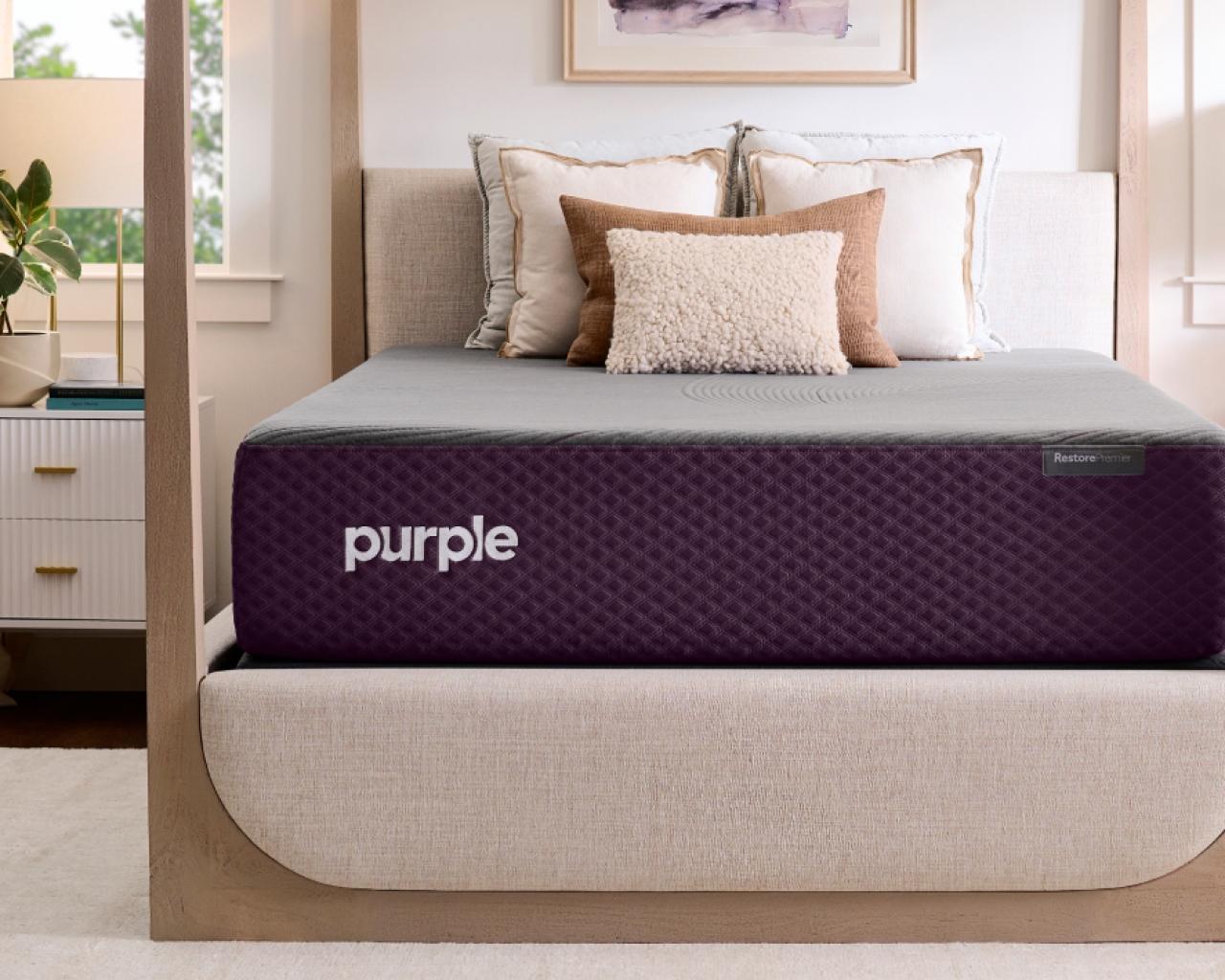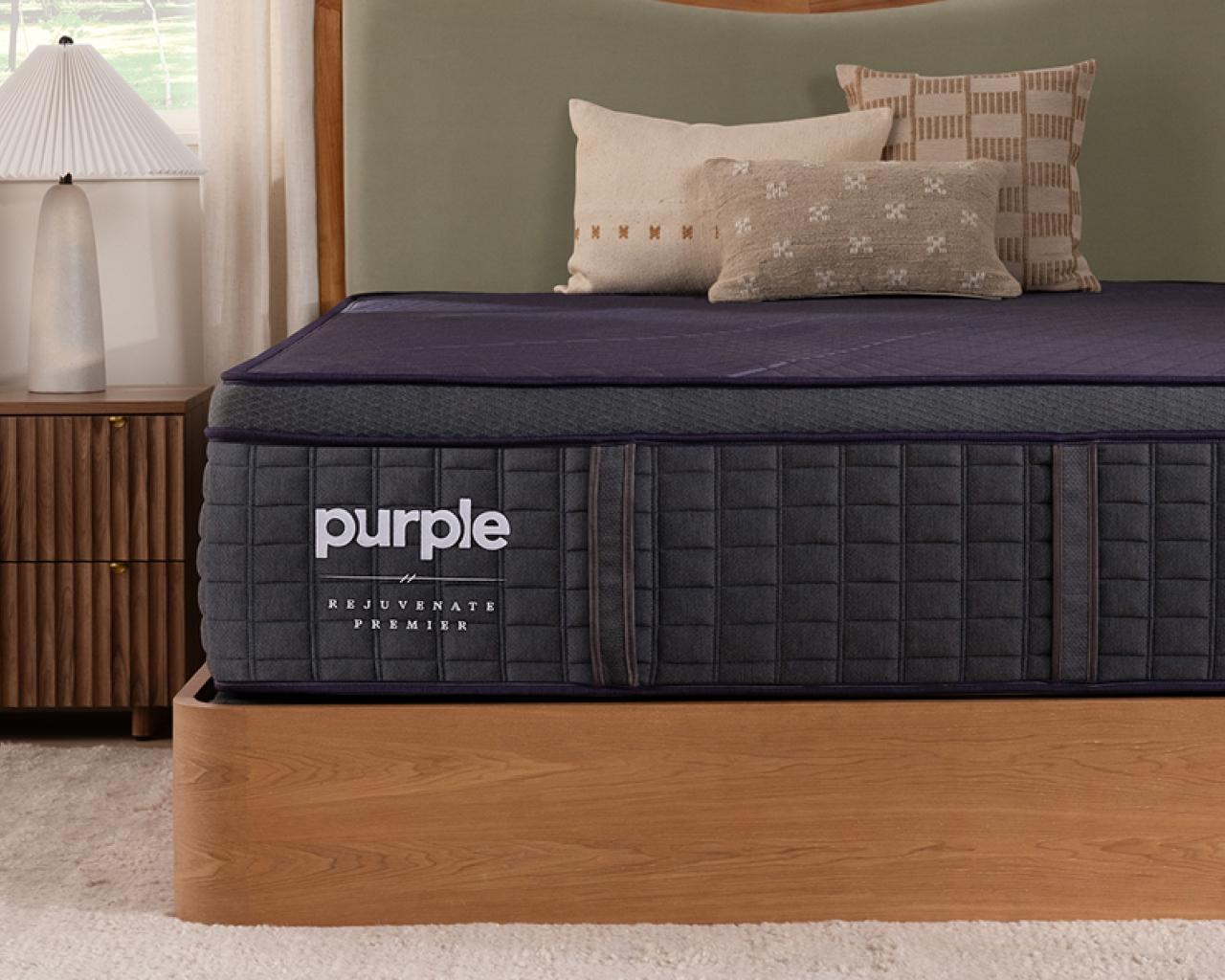
Twin vs. Twin XL Mattress: Size Guide & Key Differences
Key Takeaways
- A standard twin is 38 inches wide and 75 inches long.
- A twin XL is 38 inches wide and 80 inches long.
- The main difference is an extra five inches length-wise on the twin XL.
According to a survey by RestoreZ, about two-thirds (65%) of US sleepers rarely wake up feeling energized and rested. This suggests that a significant number of people are not getting quality sleep and may benefit from learning how to sleep better. While numerous factors affect sleep quality, having the proper mattress size makes a big difference in reducing discomfort and promoting restorative sleep.
If you are deciding between a twin vs twin XL, the main difference comes down to length. The twin XL length is slightly longer at 80 inches, five inches more than a standard twin mattress. There is no difference in width.
A twin or twin XL works well for solo sleepers looking for the best mattress for optimal sleep and your room space. Most dorm beds are twin XL mattresses. If you have extra room, you might choose between a twin XL and a full instead.
Keep reading for an in-depth comparison between a twin and a twin XL mattress.
Twin vs. Twin XL Size Comparison Chart
Here’s a comparison of the key differences between twin vs. twin XL size mattresses.
Twin | Twin XL | |
Dimensions | 38 inches wide x 75 inches long | 38 inches wide x 80 inches long |
Surface area | 237.5 square feet or 2,850 square inches | 253.3 square feet or 3,040 square inches |
Price range | $150-$1,000
Purple Starting Price: $649 | $175-$1700
Purple Starting Price: $999 |
Best for | Average-height children or single sleepers | Tall children or single sleepers and college students |
Benefits |
|
|
Twin Mattress Dimensions
Best for: Children or single sleepers under six feet
A twin mattress is a popular bed size for children or single sleepers under six feet tall. Sometimes called a single mattress, the twin mattress measures 38 inches wide and 75 inches long. Twin mattresses are great for smaller bedrooms, guest rooms, children’s rooms, or even college dorms because of their size.
While the twin mattress is popular for children’s rooms, those with fast-growing children typically opt for a twin XL for a future-proof bed solution. The dimensions are smaller for a twin in twin vs. twin XL dimensions.
Twin mattresses may not be the best choice for couples or partnered sleepers due to their compact width. If you want a mattress that fits more than one sleeper, consider king or queen beds.
Pros | Cons |
Compact & space efficient | Only comfortably fits one person |
Budget Friendly | Tall individuals may feel cramped |
Lightweight | Limited Legroom |
More options for sheets and bed accessories |
Twin XL Mattress Dimensions
Best for: Fast-growing children, tall single sleepers, or college students
A twin XL mattress is a longer variant of the standard twin mattress size, providing extra legroom — without sacrificing its space-saving width. This mattress has the same width as a standard twin (38 inches), but the twin XL length is five inches longer (80 inches long.)
This extra space makes twin XL mattresses an ideal choice for those who need more legroom but need the compact width to fit in smaller rooms, like college dormitories. It can also be a great choice for children who are growing quickly, so parents can upgrade kids’ bedrooms as they age without needing to buy a new mattress.
Similar to a standard twin, the extra-long twin mattress dimensions may not be the best choice for partnered sleepers. The extra width of king or queen mattresses may make for a more comfortable experience.
Twin XL Mattress | |
Pros | Cons |
Extra five inches lengthwise from the standard twin | Too narrow for partnered sleepers |
Same length as a queen, but less expensive | Slightly higher price point than a standard twin |
Lightweight and space-efficient mattress | Harder to find sheets and bed accessories |
Key Differences Between Twin vs. Twin XL Mattresses
The key difference between a twin bed vs. twin XL mattress is an additional five inches in length on the twin XL. Other major differences include cost, who it is suited for, and the availability of accessories. Keep these in mind when deciding which size works best for you.
- Cost: There is a small price difference of around $50 to $250 for the twin XL compared to the twin.
- Length: The twin XL is five inches longer than a standard twin mattress.
- Uses: The use of a twin mattress vs twin XL depends on environmental factors. Standard twins are great for children’s rooms and guest beds. Twin XL mattresses work well for college dorms and bedrooms with limited space.
- Accessories: Twin and twin XL mattresses have different sizes for accessories, including sheets and bed frames. Standard twin mattress accessories are easier to find.
Twin vs. Twin XL vs. Other Mattress Sizes
Depending on your needs, a twin or twin XL mattress might be too small. Sleep habits and the dimensions of your bedroom impact which size will work best.
Couples may want to compare a twin vs. a full mattress or even a queen mattress if they have space. Another option is to make a split king with two twin XL mattresses. Review the table below to find which mattress size works best for you.
Mattress Size Comparison | ||
Dimensions | Best For | |
Twin | 38” x 75” | Single sleepers |
Twin XL | 38” x 80” | Taller single sleepers |
Full | 54” x 75” | Single sleepers who want to sprawl or partners who enjoy sleeping close together |
Queen | 60” x 80” | Single sleepers or partners who want extra room |
King | 76” x 80” | Partners who enjoy having space, those with kids/pets, or light sleepers |
How To Choose Between a Twin vs. Twin XL
Now that you understand the differences between a twin XL vs. a twin mattress, let’s dive into how you choose the best mattress size for your needs.
1. Consider Mattress Size and Needs
Choosing the ideal mattress goes beyond your current needs — anticipating your future needs can help you save money later down the road. Comparing a twin vs twin XL vs. a full mattress requires factors such as age, height, and sleeping positions or habits — and how the bed’s dimensions will affect these factors.
For example, maybe you’re a solo sleeper now but see yourself needing a mattress that can comfortably accommodate a partner in the future. In this instance, it’s helpful to know that you can push two twin mattresses together to create a slightly shorter king.
A standard twin mattress will suffice for a solo sleeper who tends to curl up in a side-sleeping position, but a young child may be more comfortable in a twin XL mattress as they grow older and taller.
2. Measure Your Bedroom
The next thing to consider is your bedroom size. Twin and twin XL are great choices for rooms with limited space, because of their compact widths.
A twin or single bed provides adequate space for those who live in a studio apartment or a small room without feeling cramped. On the other hand, the twin XL bed is longer and may be more comfortable — if you have space in your room to accommodate the extra five inches of length.
If you aren’t sure what mattress would fit better in your space, here is a general rule of thumb to follow:
- Twin mattresses can fit comfortably in a room that’s at least 7 ft. x 10 ft.
- Twin XL mattresses can fit comfortably in a room that’s at least 7.5 ft. x 10 ft.
You’ll want adequate space in your room to fit any furniture and move around freely. So, before you decide whether a twin or twin XL is best for your needs, measure your bedroom.
3. Determine Your Desired Comfort Level
Finding the right mattress is key to restorative sleep. Mattress size is an important factor in determining comfort level. Other interacting factors are height, sleep position, and your preference for mattress feel, using a mattress firmness scale.
A twin bed is ideal for kids ages 5 to 12 and adults under 6 feet, but those above 6 feet may need a twin XL bed to get the comfort you desire. The twin XL mattress is long enough that your feet won't hang off the mattress.
Remember that the types of pillows you use can also play a significant role in comfortable sleep, and they can take up quite a bit of space. If you are the type to sleep with plenty of pillows, a twin XL could be the perfect option.
4. Look at Bedding and Accessories
It’s also important to consider your preferences for bed frames, bedding, and other accessories like mattress toppers when deciding between a twin and twin XL size mattress. Since twin mattresses are standard, it’s typically easy to find twin vs twin XL sheets, frames, comforters, toppers, and other options in the right size.
Finding bedding and other accessories for a twin XL may be a little more difficult as it’s not a standard size. But, you’ll likely be able to find what you need for a twin XL online if not in stores.
5. Set Your Budget
There is a reason why twin and twin XL are popular among younger consumers. Not only are they versatile and can be used in various spaces, but they are also perfect for those with tight budgets.
In general, here’s what you can expect to pay for these mattress sizes:
- Twin: $150-$1,000
- Twin XL: $175-$1,700
At Purple, a twin mattress starts at $699. Twin XLs are only slightly more expensive, starting at $849. Smaller mattresses may cost less, but you shouldn’t compromise on space and comfort, especially if you’re sharing the bed.
Is a Twin or Twin XL Right for You?
This depends on your needs! Both twin XL and twin mattresses are excellent long-lasting bed size options for small bedrooms and compact living areas.
The two main differences between picking a twin vs. twin XL mattress are:
- The additional length a twin XL provides.
- The small but negligible added cost of choosing a twin XL over the standard twin.
For some, a twin XL is an easy choice for its extra space, but if you're on a budget or have very limited space, opt for the twin.
FAQ
A twin XL is five inches longer than a standard twin mattress, coming in at 80 inches in length compared to the 75 inches of a standard twin. Twin and twin XLs have the same width — 38 inches.
The extra five inches in a twin XL mattress create an additional 190 square inches of surface area on the mattress. A twin mattress has 2,850 square inches of surface area, while a twin XL has 3,040 square inches of surface area.
No, twin sheets will not fit on a twin XL mattress due to the five extra inches of length. You can use twin XL sheets on a twin bed. The sheets fit over a standard twin mattress but with additional fabric at the ends. You can tuck in the extra fabric, but restless sleepers may undo the sheets, creating an uncomfortable experience.
If you have both a twin and twin XL mattress in your home, you may be able to purchase specially manufactured sheets to potentially fit both beds. Some mattress manufacturers produce regular flat sheets with generous sizing to also fit on twin XL beds.
But, to be safe, it’s best to purchase bed sheets designed specifically for a twin XL mattress for optimal comfort.
Yes, adults on a budget may find that either twin or twin XL mattresses can be suitable for their needs. Sleepers under 6 feet can still be comfortable on a standard twin.
On the other hand, the twin XL is more appropriate for adults taller than 6 feet. But, these sizes may not work for larger people, couples, or a person who has a sleeping partner.
No, a twin XL cannot comfortably fit two sleepers. While a twin XL mattress provides extra length to comfortably sleep taller people, it does not provide any additional width compared to a standard twin mattress.
Some couples prefer to purchase two twin XL beds for a split-king bed by pushing them together to create a split-king bed that allows each sleeper to have their own unique sleep experience. With this setup, couples can choose their own firmness preferences or even purchase bed frames that adjust separately so one person can sit up and read while the other sleeps.
Most bunk beds fit the standard twin mattress, about 75 inches by 38 inches. If you want the additional length, you may be able to find a bunk bed that also fits a twin XL mattress — you may just need to do your shopping online.
No, a twin XL mattress won’t fit snugly on a twin bed frame. A twin XL mattress would hang an extra five inches off the frame lengthwise. Putting a mattress on the wrong frame size may void the mattress warranty.
No. But, placing two twin XL beds alongside each other would make a standard king size bed, 76 inches wide and 80 inches long. Some couples prefer this split-king setup to ensure they can both have the type of mattress they prefer.
On the other hand, the California king bed has a dimension of 72 inches in width and 84 inches in height – four inches longer than a king.
More To Explore
Level up your sleep routine with our most-loved products.



